Uncovering the Treasures of Umbria
The Green Heart of Italy is best characterized by endless landscapes featuring rolling hills, verdant mountains, and expansive plains all dotted with charming medieval hamlets. While smaller, cities and towns here are rich in history, beginning with the earliest Etruscan and Umbrian settlements. This makes Umbria a great option for returning and first-time travelers who wish to enjoy Italy’s historic and architectural aspects while maintaining distance from areas with large crowds. Often referred to as Tuscany’s cousin, the picturesque countryside of Umbria offers the same charm as its neighbor, but with less bustle. No matter what part of Umbria you visit, this region is sure to amaze with its history, culture, and nature.
Getting to Know the Green Heart of Italy
Before diving into the hidden gems of Umbria, it’s important to gain an understanding of the region through its most visited cities: Perugia, Orvieto, and Assisi.
Perugia serves as the regional capital and its province covers the majority of Umbria. Though it’s the largest city in Umbria, Perugia’s medieval character remains very much intact with the historic city walls still standing. Below Perugia, travelers can discover the city’s Etruscan origins as well as Ancient Roman and medieval remains via a series of underground tunnels. In addition to its history and architecture, Perugia delights travelers with its chocolate; the well-known Perugina Chocolate Factory lies just outside the city center and Perugia’s annual Eurochocolate event is among the largest chocolate festivals in Europe.
Perched atop volcanic stone and surrounded by green plains and hills, Orvieto perfectly embodies the spirit of the Umbria region. Divided into two parts, a funicular connects the lower modern city with the hilltop walled center. The winding cobblestone streets feature striking medieval architecture and scenic photo opportunities at every turn. The elaborate and colorful façade of the Orvieto Cathedral is considered to be the most breathtaking in all of Italy, while a tour of Orvieto’s vast underground area with ancient tunnels and caves allows for full immersion into the city’s Etruscan past.
Even travelers unfamiliar with Umbria will have heard of Assisi. For centuries, this charming hilltop town has been synonymous with its most famous native son, St. Francis. A pilgrimage destination since the thirteenth century, Assisi is renowned for its Franciscan sites, in particular the Romanesque and Gothic Basilica of Saint Francis with its stunning medieval frescoes, such as those depicting the life of Saint Francis by famed artist Giotto. Filled with pilgrims and travelers during the day, the true spirit of Assisi is best experienced while wandering the historic streets in the evening.
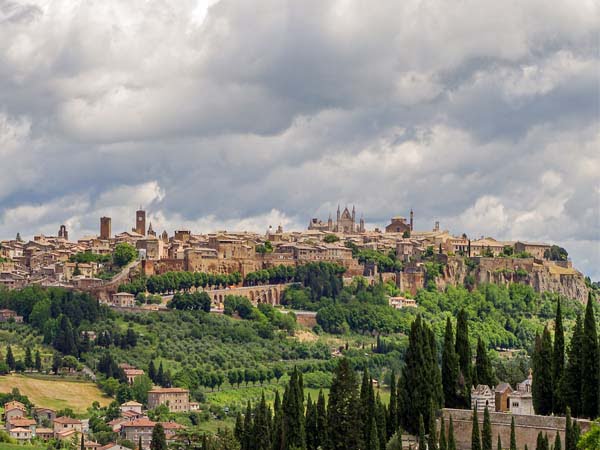
Umbria’s Off-the-beaten-path gems
While Perugia, Orvieto, and Assisi are all majestic cities worthy of a visit, they tend to overshadow Umbria’s less popular, yet equally stunning smaller towns. Featuring breathtaking views, fascinating cultural traditions, and historic architecture, Umbria’s lesser-known pearls can certainly stand on their own.

Gubbio
Located on Mount Ingino, Gubbio is one of the best places to experience Umbria’s unique intersection of medieval architecture and nature. Before the Romans, Gubbio was a vital settlement of the Umbri civilization. In fact, Gubbio’s most revered artifacts are the Eugubian Tablets, a set of bronze tablets that contain text in the extinct Umbrian language. The city reached its peak during the Middle Ages and at the end of the fourteenth century it became part of the Duchy of Urbino. During the Renaissance, Gubbio served as an important center for the production of maiolica pottery.
Gubbio is best-known for the Festa dei Ceri, an annual tradition that dates back to 1160. Held on May 15, the Festa dei Ceri honors St. Ubaldo, Gubbio’s Patron Saint. The event centers around three large wooden artifacts (called ceri). Weighing more than 600 lbs., the ceri are carried through the streets of Gubbio by teams who race uphill to the Basilica of Sant’Ubaldo as the locals cheer them on.
Today, visitors gather in Piazza Grande, Gubbio’s elevated main square, to admire the stunning panoramas. From Gothic towers to elegant palaces and churches, the medieval architecture is vast and covers the majority of the city. The best views can be enjoyed from the open-air cable car that rises slowly above the medieval rooftops to reach the Basilica of Sant’Ubaldo at the top of Mount Ingino.
Spoleto
Located in a sea of greenery, Spoleto is a town as charming as it is ancient. Thanks to its proximity to the Apennine Mountains, Spoleto served as a key strategic settlement for the Ancient Romans. During the Middle Ages, the city flourished under the Lombards, who designated Spoleto as the capital of the powerful Duchy of Spoleto, which ruled over much of Central Italy. Afterward, Spoleto fell under the dominion of the Papal States before becoming part of the Kingdom of Italy.
Since 1958, Spoleto has hosted the Festival dei Due Mondi, a summer music festival and one of Italy’s most important cultural events. Held from June to July each year, the festival features a variety of concerts and other performances in the fields of dance, drama, and visual arts.
Key historic monuments in Spoleto include the Romanesque Duomo of Santa Maria Assunta, the Roman theater, and the medieval Rocca Albornoziana fortress that watches over the town. For full immersion into Spoleto’s tranquil scenery, visit Ponte delle Torri, an arched bridge constructed during the Middle Ages that spans a picturesque gorge.
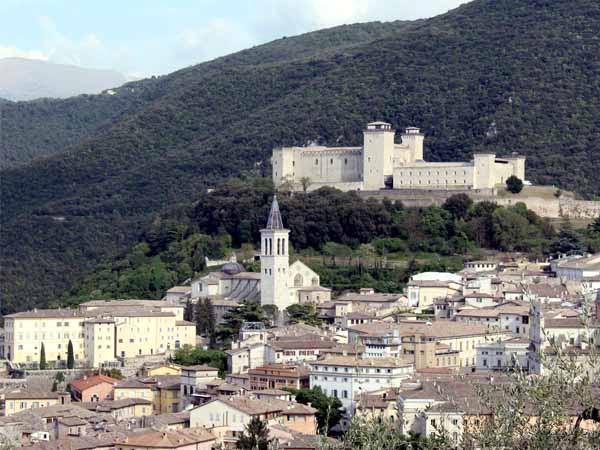
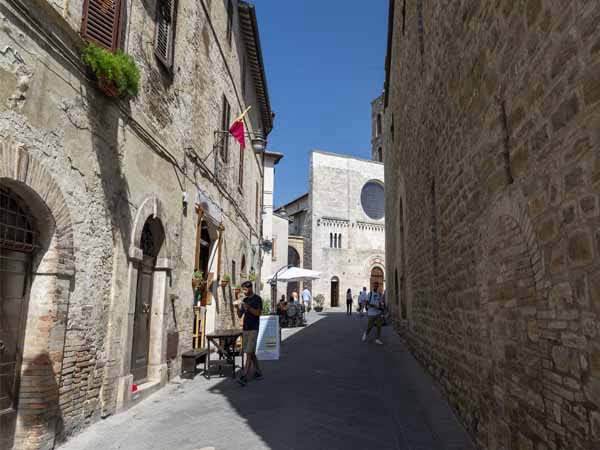
Bevagna
Located in the vast Umbra Valley, this small, tranquil town is uncharted territory for most international travelers. Originally founded by the Etruscans, Bevagna passed to the Romans then the Duchy of Spoleto before joining the Papal States and eventually the Kingdom of Italy.
The village’s most important cultural event, called Mercato delle Gaite, occurs in June. This summer festival is held in the four gaite (quarters) of the historic center. It’s a celebration of Bevagna’s medieval past with banquets and shops showcasing historic crafts, such as blacksmithing.
Bevagna is one of the few Umbrian towns on level ground; as a result, the steep streets that are characteristic of Gubbio or Orvieto are absent in Bevagna. Evidence from the Roman period is plentiful, such as the Roman amphitheater and thermal baths decorated with ancient mosaics and frescoes. The medieval walls still surround the city, while the main square, Piazza San Filippo, features two Romanesque churches — San Michele Arcangelo and San Silvestro — that face each other.
Montefalco
Just over 4 miles south of Bevagna, the equally charming town of Montefalco rests upon a hill overlooking a vast plain. The earliest settlers were the Umbri, followed by the Romans and then the Lombards. The current town was rebuilt after its destruction by Frederick II in the thirteenth century. Subsequently, Montefalco fell to the Lords of Foligno then the Papal States before joining unified Italy.
The village’s cultural wealth can be measured by its historic churches. Of particular renown is the Church of San Francesco, which is now a civic art museum that hosts works by artists such as Perugino. Other key churches, mostly constructed in the Romanesque style, include Sant’Agostino, Santa Lucia, and Santa Chiara da Montefalco, where the remains of the village’s native saint are held.
Today, the defensive walls still stand featuring several towers and gates. Among the locals, Montefalco is known as the “Balcony of Umbria” due to the panoramic views it offers of the valley between Perugia and Spoleto. The town, surrounded by vineyards and olive groves, serves as the hub for the Montefalco wine area, which produces Montefalco Sagrantino and Montefalco Rosso wines.
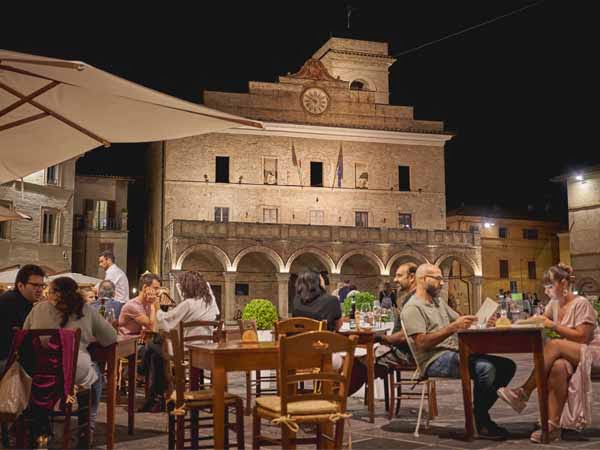
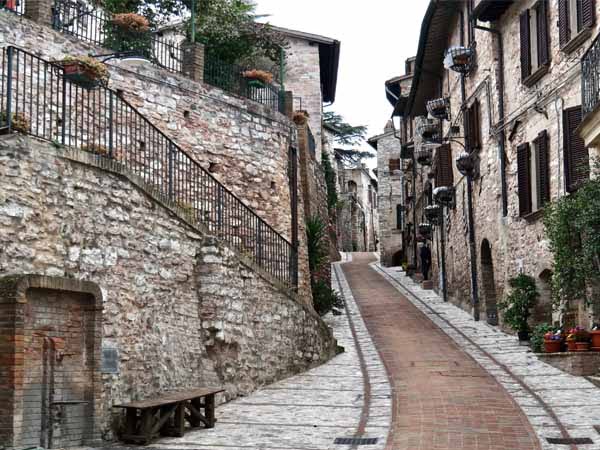
Spello
Like Assisi, the town of Spello is located on Monte Subasio. The walled medieval city overlooks the Umbra Valley and was originally founded by the Umbri. During the Roman period, Spello was considered to be one of the most important cities in Umbria. Following the fall of the Roman Empire, Spello was destroyed by barbarian invasions then became part of the Duchy of Spoleto before joining the Papal States followed by the Kingdom of Italy.
In the seventeenth century, Spello began celebrating its most renowned cultural event, the Infiorate, which coincides with the Feast of Corpus Christi. During the festival, intricate and colorful carpets of flowers are composed throughout the city center. With subjects ranging from geometric shapes to biblical events, the entire town participates in this artistic exhibition that attracts travelers from all over the world.
Historic sites in Spello include the city walls, defensive towers, and gates, such as Porta Venere. Among the must-see churches is Santa Maria Maggiore, a Romanesque structure home to a series of frescoes by Pinturicchio. The nearby Church of Sant’Andrea features an altarpiece by Pinturicchio, while the Church of San Claudio is renowned for its rose window and frescoes by local Umbrian painters.
To truly get to know the town, walk along the main street, Via Cavour, and admire the beautiful buildings composed of Subasio marble. When the sun sets, travelers and locals alike are left in awe as the stone acquires a splendid pink hue.
Countryside and outdoor adventures
In addition to the cities and towns of Umbria, there’s much to explore in the verdant countryside. The hilly landscapes are not only gorgeous, but they provide the perfect conditions for wine and olive oil production in areas around Orvieto, Montefalco, Assisi, and Lake Trasimeno. Historically, Umbria was known for its white wines, such as Orvieto; however, red wine production has increased in recent years with varieties such as Torgiano Rosso Riserva and Montefalco Sagrantino becoming more popular. Travelers can enjoy tastings of the region’s wine as well as extra virgin olive oil, which is essential to the local cuisine.
While exploring the Umbrian countryside, art lovers may wish to stop in Deruta. Since the fifteenth century, Deruta has been one of Italy’s artistic hubs for maiolica pottery. To learn more about this historic craft and admire the town’s colorful creations up-close, visit the Ceramics Museum or one of the artisan workshops scattered throughout Deruta.
Thanks to the pristine scenery, Umbria is home to an abundance of natural parks. The vast Monti Sibillini National Park, shared between Umbria and Marche, is a wonderful place to experience the serenity of the Apennine Mountains. In total, Umbria has 6 regional parks with mountain areas, forests, lakes, rivers, and wetlands. The varied landscapes feature diverse flora and fauna with historic structures, such as castles and abbeys, providing a juncture between nature and cultural heritage. Active travelers may partake in a variety of activities including hiking, mountain biking, horseback riding, and rafting.
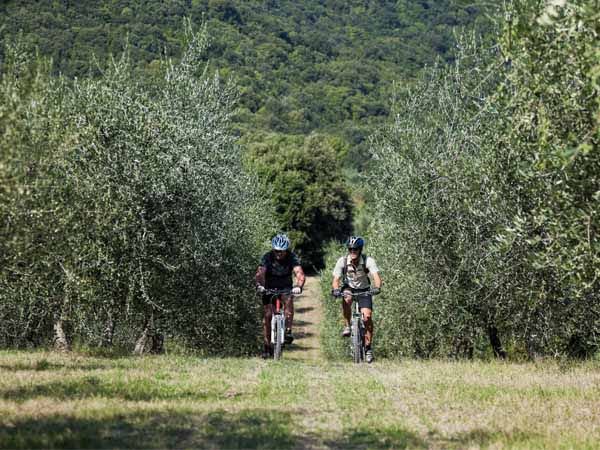
Authentic accommodations
Whether you’d like to stay in the historic towns, the picturesque countryside, or both, Umbria offers several types of accommodations to enhance your experience while engaging with the local culture.
An agriturismo, or farm stay, is the best way to immerse in Umbria’s rural heritage. Throughout Umbria’s countryside, local farmers invite travelers to learn more about the production processes behind the region’s best products, from olive oil and wine to cheese and vegetables. Each agriturismo is unique and can range in size as well as offerings, yet all encourage travelers to slow down and truly appreciate the remarkable landscapes that surround them.
The cities of Umbria are filled with historic buildings, an aspect that naturally extends to hotels. Imagine admiring the ample monuments, art, and architecture of Umbria by day then spending your nights in centuries-old accommodations. With options ranging from rustic to upscale, travelers can choose to stay in medieval castles and towers, renovated monasteries, and even former noble palaces, all of which perfectly encapsulate Umbria’s charm and character.
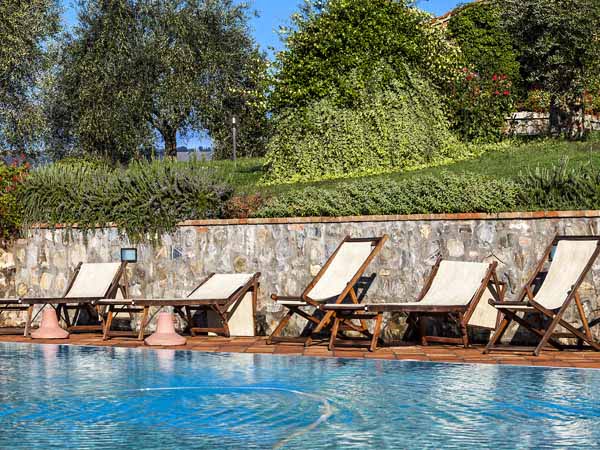
Don’t forget the local foods
It wouldn’t be a vacation to Italy without delicious food. Umbria’s regional cuisine centers on simple yet flavorful recipes that incorporate fresh, local ingredients. Staples here include fragrant extra virgin olive oil, foraged mushrooms and truffles, wild game, fresh vegetables, lentils, and handmade pasta. Lake Trasimeno — Central Italy’s largest lake — supplies freshwater fish such as trout, carp, and perch, while the ancient town of Norcia is renowned for its cured meats and pork products. Whether you’re a self-proclaimed foodie or simply want to enjoy an unforgettable meal, Umbria won’t disappoint.
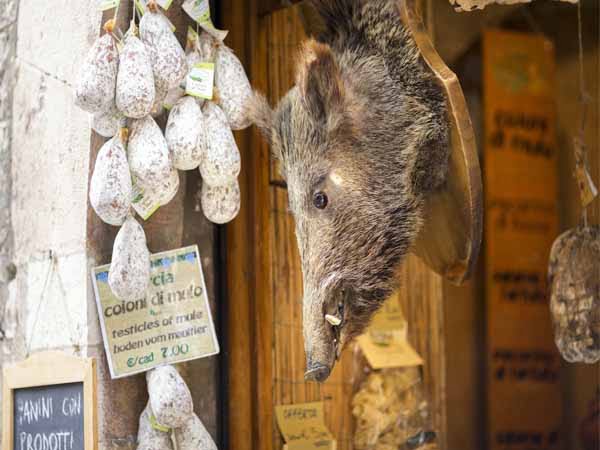
Umbria may be the perfect destination for your next trip to Italy. To learn more about this enchanting region and its many offerings, click here.
